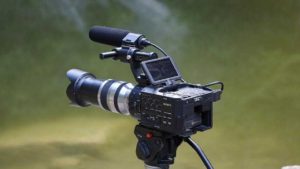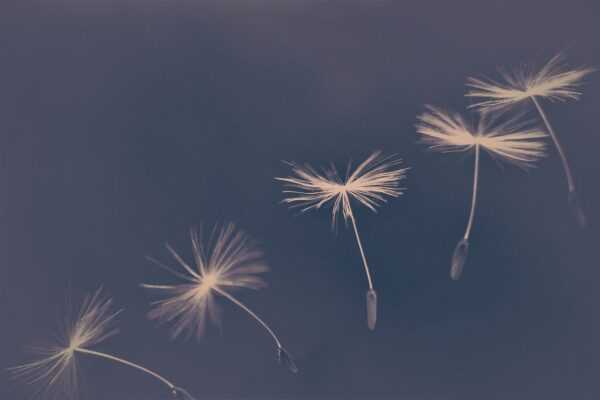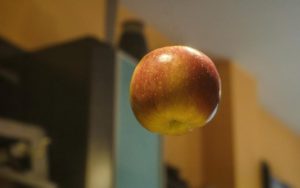Nikola Tesla
The following experiment Tesla sent to study the possibility of self-creation of a standing electromagnetic wave. In addition to a multitude of induction coils and other equipment, he designed a “amplifying transmitter”. The coils of the primary winding were wound on the huge base of the transformer. The secondary winding was connected with a 60-meter mast and ended with a copper ball of a meter diameter. When passing an alternating voltage across the primary coil of several thousand volts, a current with a voltage of several million volts and a frequency of up to 150 thousand hertz occurred in the secondary coil.
During the experiment, lightning-like discharges emanating from the metal ball were recorded. The length of some discharges reached almost 4.5 meters, and thunder was heard at a distance of up to 24 km. The first run of the experiment was interrupted due to a burned-out generator at a power plant in Colorado Springs, which was the source of current for the primary winding of the “amplifying transmitter”. Tesla was forced to stop the experiments and independently repair the failed generator. A week later, the experiment was continued.
Based on the experiment, Tesla concluded that the device allowed him to generate standing waves that spherically propagate from the transmitter and then converge with increasing intensity at the diametrically opposite point of the globe, somewhere around the islands of Amsterdam and Saint-Paul in the Indian Ocean.
Nikola Tesla recorded his notes and observations from experiments in a laboratory in Colorado Springs in a diary, which was later published under the name “Colorado Springs Notes, 1899–1900”.
In the fall of 1899, Tesla returned to New York.
Project “Wondercliff”
John Pierpont Morgan, an industrialist who financed Tesla’s research, 1903
60 km north of New York on Long Island, Nikola Tesla acquired a piece of land bordering the possessions of Charles Warden. The area of 0.8 km² was located at a considerable distance from the settlements. Here Tesla planned to build a laboratory and a science campus. According to his order, the architect V. Grou designed the project of a radio station – a 47-meter-high wooden frame tower with a copper hemisphere at the top. The construction of such a structure made of wood gave rise to many difficulties: because of the massive hemisphere, the center of gravity of the building shifted upwards, depriving the structure of stability. With difficulty, I managed to find a construction company that took on the project.The construction of the tower was completed in 1902. Tesla settled in a small cottage nearby.
Making the necessary equipment was delayed because the industrialist John Pierpont Morgan, who financed it, broke the contract after he learned that instead of practical goals for the development of electric lighting, Tesla plans to engage in research on wireless transmission of electricity. Having learned about the termination by Morgan of financing the projects of the inventor, other industrialists also did not want to deal with him. Tesla was forced to stop construction, close the laboratory and disband staff. Paying off creditors, Tesla was forced to sell the land. The tower was abandoned and stood until 1917, when the federal authorities suspected that German spies use it for their own purposes. Unfinished project Tesla blew.
XX century
After 1900, Tesla received many other patents for inventions in various fields of technology (electric meter, frequency meter, a number of improvements in radio equipment, steam turbines, etc.)
In the summer of 1914, Serbia was at the center of events leading to the start of the First World War. Staying in America, Tesla took part in raising funds for the Serbian army. Then he begins to think about creating a super-weapon: “The time will come when some scientific genius will come up with a machine capable of destroying one or several armies with one action.”
In 1915, newspapers wrote that Tesla was nominated for the Nobel Prize in Physics. Simultaneously Thomas Edison was announced. The inventors were asked to divide the award in two. According to some sources, the mutual hostility of the inventors led both of them to abandon it, thus rejecting any possibility of sharing the prize. In fact, Edison was not offered a prize in 1915, although he was nominated for it, and Tesla was first nominated in 1937.
On May 18, 1917, Tesla was awarded the Edison Medal, although he himself resolutely refused to receive it.
In 1917, Tesla proposed the principle of operation of a device for radio detection of submarines.
In 1917–1926, Nikola Tesla worked in various cities of America. From summer 1917 to November 1918, he worked for Pile National in Chicago; in 1919-1922 he was in Milwaukee with Ellis Chalmers; The last months of 1922 took place at the Waltham Watch Company in Boston, and from 1925 to 1926 Tesla developed the gasoline turbine for the Budd Company in Philadelphia.
In 1934, an article by Tesla was published in Scientific American, which caused a wide resonance in scientific circles, in which he examined in detail the limits of the possibility of obtaining ultrahigh voltages by charging spherical containers with static electricity from rubbing belts and doubted that the discharges of this electrostatic generator could help in the study of the structure of the atomic nucleus.
The passing of Nikola Tesla
Already in old age, Tesla was hit by a passenger car, he got a broken ribs. The disease caused acute inflammation of the lungs, which became chronic. Tesla was bedridden.
In Europe, the war began. Tesla deeply worried about his homeland, which was in occupation, repeatedly making hot appeals for peace to all Slavs (in 1943, after his death, the first Guards Division of the Yugoslav People’s Liberation Army was given the name of Nikola Tesla ).
On January 1, 1943, Eleanor Roosevelt, the spouse of the President of the United States, expressed her wish to visit Tesla for the patient. Yugoslav Ambassador to the USA Sava Kosanovich (who was Tesla’s nephew) visited him on January 5 and arranged a meeting. He was the last to talk with Tesla.
Tesla died of heart failure on the night of January 7-8, 1943. Tesla always demanded that no one interfered with him; on the doors of his hotel room in New York even hung a special sign. The body was discovered by the maid and the director of the New Yorker Hotel only 2 days after his death. On January 12, the body was cremated, and an urn with ashes was installed at Ferncliffe Cemetery in New York. She was later transferred to the Nikola Tesla Museum in Belgrade.
Inventions and scientific works of Nikola Tesla
Alternating current
Since 1889, Tesla began to study high frequency currents and high voltages. He invented the first samples of RF electromechanical generators (including inductor type) and a high-frequency transformer (Tesla’s transformer, 1891), thereby creating the prerequisites for the development of a new branch of electrical engineering – RF technology.
In the course of research on high-frequency currents, Tesla paid attention to safety issues. Experimenting on his body, he studied the effect of alternating currents of different frequency and power on the human body. Many of the rules, first developed by Tesla, entered into the modern basics of safety when working with high-frequency currents. He found that at a current frequency of more than 700 Hz, an electric current flows across the surface of the body, without harming the tissues of the body. Electrotechnical devices developed by Tesla for medical research, are widespread in the world.
Experiments with high-frequency currents of high voltage led the inventor to the discovery of a method for cleaning dirty surfaces. A similar effect of currents on the skin has shown that it is thus possible to remove small rashes, clean pores and kill germs. This method is used in modern electrotherapy.
Field Theory
On October 12, 1887, Tesla gave a rigorous scientific description of the essence of the phenomenon of a rotating magnetic field. On May 1, 1888, Tesla received its main patents for the invention of multiphase electric machines (including an asynchronous electric motor) and systems for the transmission of electricity through multiphase alternating current. Using a two-phase system, which he considered to be the most economical, a number of industrial electrical installations were launched in the United States, including the Niagara Hydroelectric Power Plant (1895), the largest in those years.



